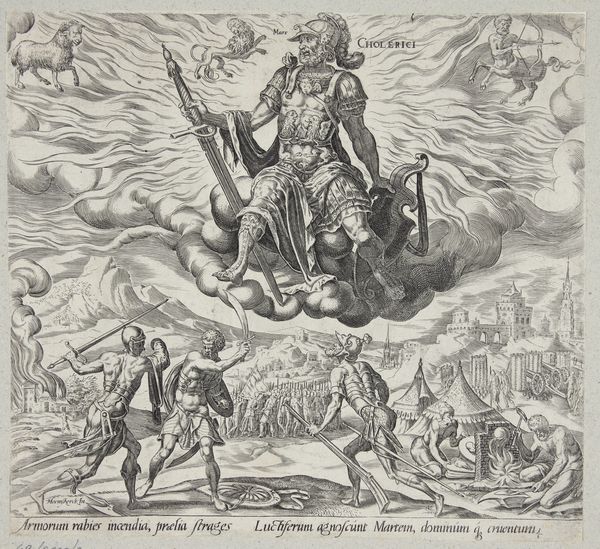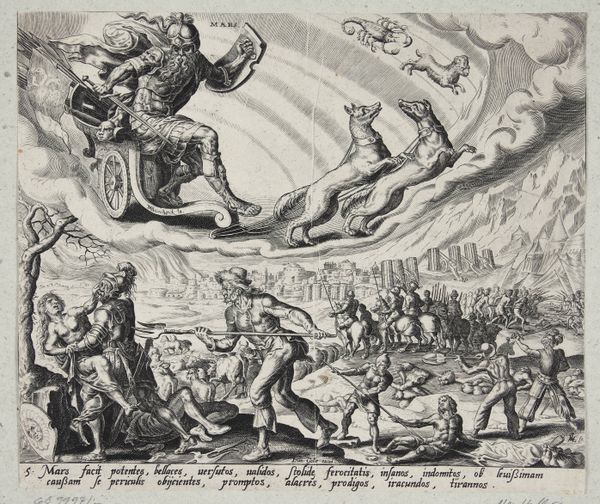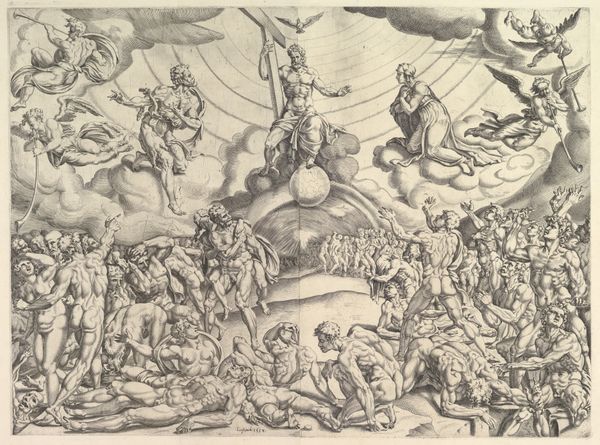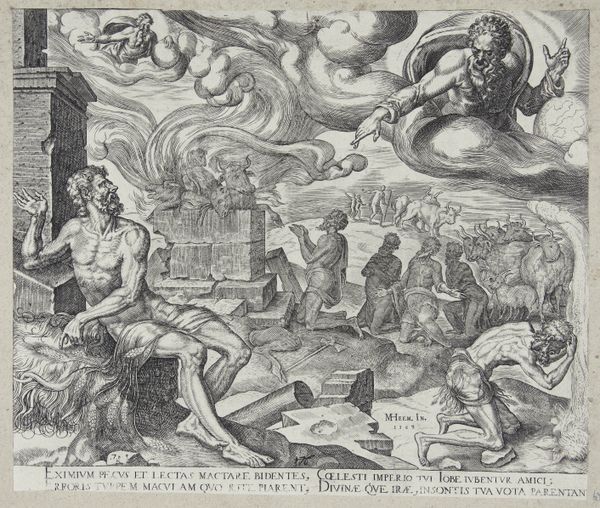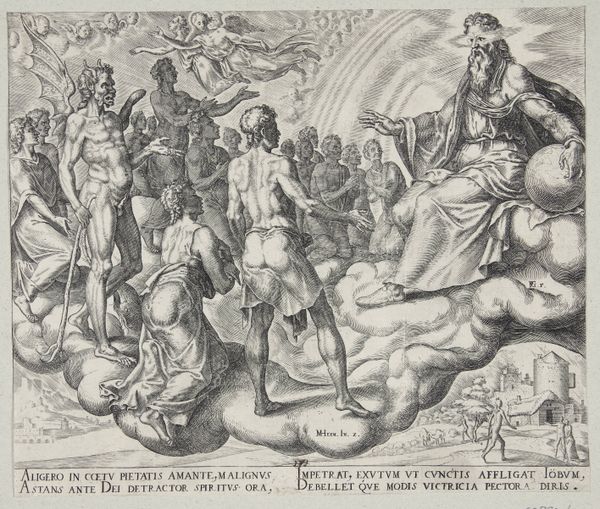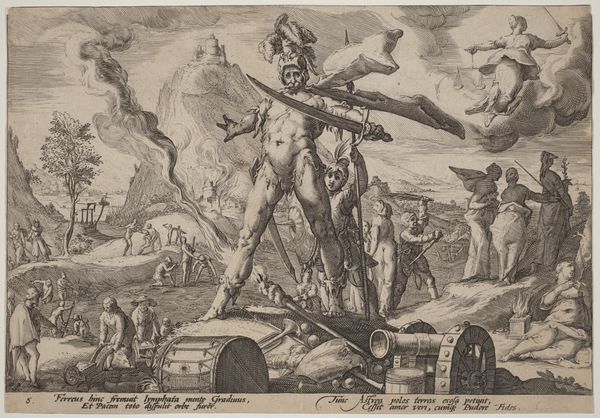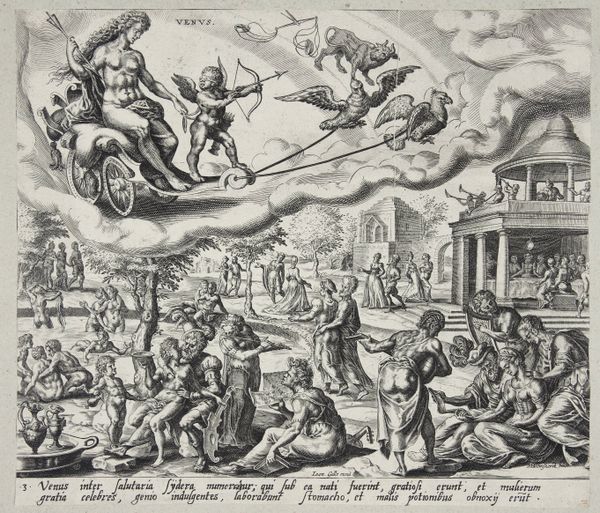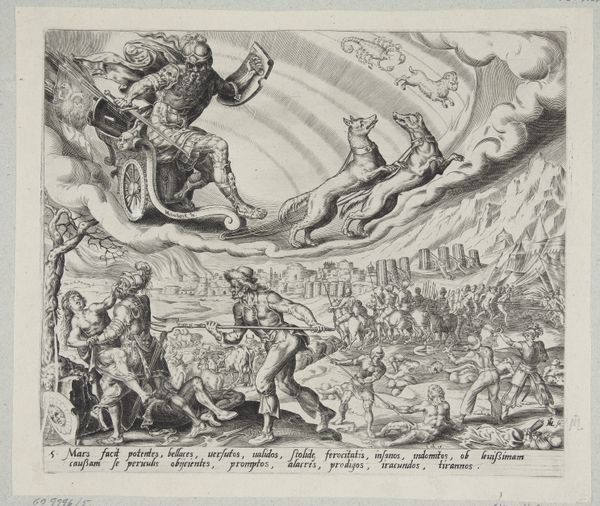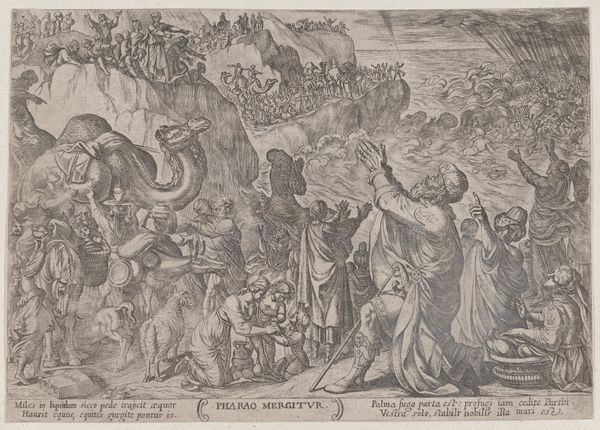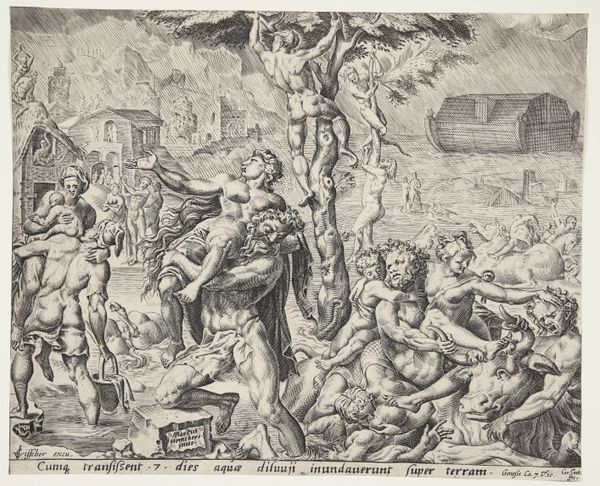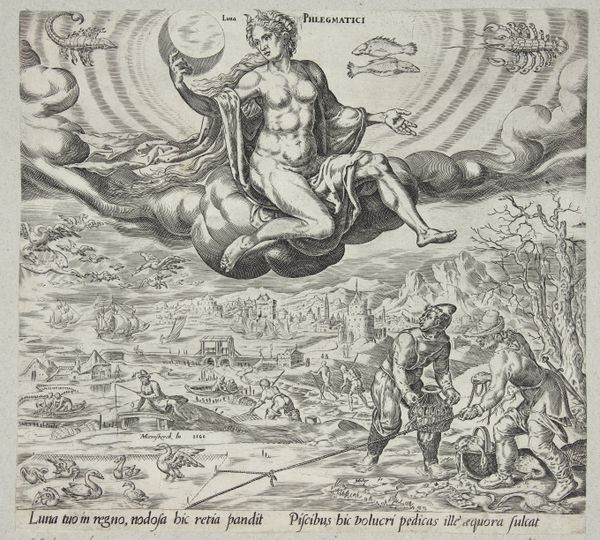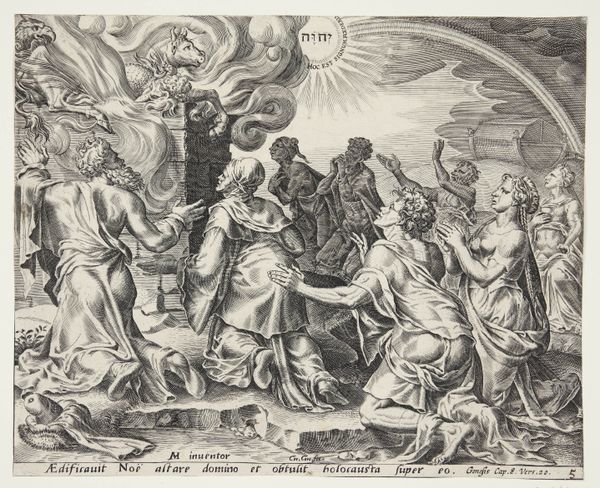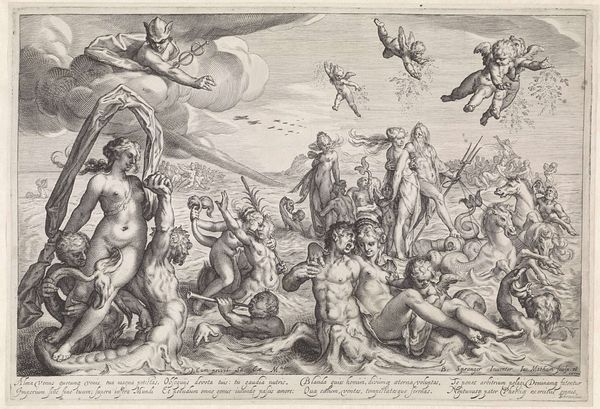
print, engraving
#
portrait
#
allegory
# print
#
landscape
#
mannerism
#
figuration
#
line
#
history-painting
#
engraving
Dimensions: 215 mm (height) x 235 mm (width) (monteringsmaal), 212 mm (height) x 234 mm (width) (bladmaal)
Curator: It looks like a bad dream sketched onto paper. Claustrophobic, somehow... all those tiny figures trapped in a desolate landscape. Editor: Indeed. We're looking at "The Melancholic Temperament," a 1566 engraving by Harmen Jansz. Muller. What grabs your attention initially from a formal standpoint? Curator: It's undeniably intricate. I'm drawn to how the lines themselves create a sense of density. The way they build up the dark, brooding clouds above and sort of weigh down everything below. You can feel it! Even that floating Saturn figure seems weary, doesn't he? Editor: Precisely. Muller's masterful use of line, particularly in the swirling clouds and Saturn's flowing drapery, imbues the piece with dynamism, while the precise lines used to render the figures in the foreground showcase his attention to detail and a sort of… Mannerist elongation, would you agree? The compression of elements leads to an almost theatrical display. Curator: The "melancholy" is definitely performing. It's got all these symbolic gestures happening at once: Saturn eating a baby (!), tools cast aside... figures idling or caught in what seems to be eternal struggle. You know, for all the supposed gloom, I sense a real imaginative vitality at work here. The composition teems with little details! Editor: Let’s think about the themes and allegorical representations woven within. Muller references Saturn, a Roman deity linked to melancholia in Renaissance thought, alongside symbolic figures engaged in diverse creative or intellectual endeavors—geometry, music. Could this point to how genius and deep thought can coexist with depression, anxiety? Curator: Could be! Or maybe he is portraying all those so-called artistic sensibilities that could sometimes sink one down into madness and paralysis. To some, genius and madness are very near one another, maybe dangerously entwined. I’m mostly fascinated by the sense of enclosedness, however—like these figures inhabit the psyche’s labyrinth. Editor: This reminds us how printmaking helped circulate complex philosophical ideas like the humoral theory during the 16th century, giving them lasting visual form and stimulating dialogues around emotions. Curator: The engraving serves as both a detailed document and, in its emotional depth, a work that's startlingly contemporary in some regards, you know? Editor: A fitting summary! There's definitely more to discover but I suggest we let our visitors discover that at their own time.
Comments
No comments
Be the first to comment and join the conversation on the ultimate creative platform.
